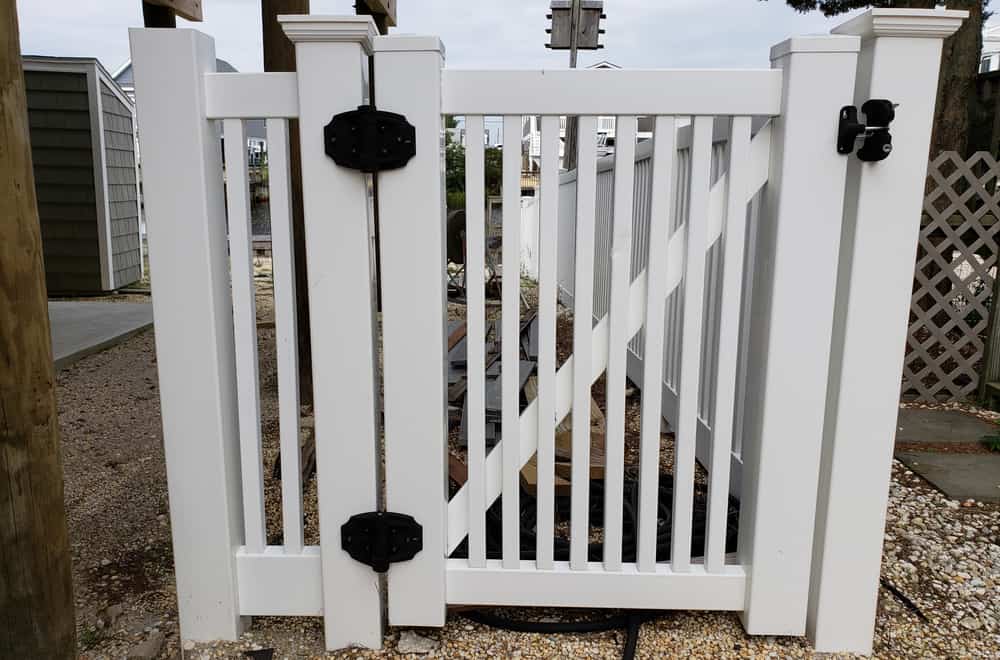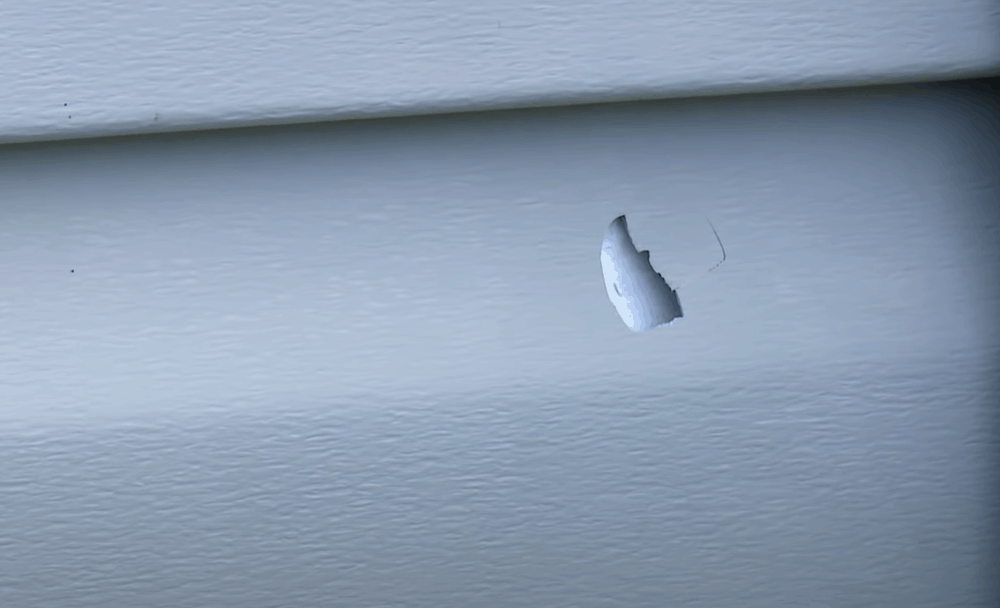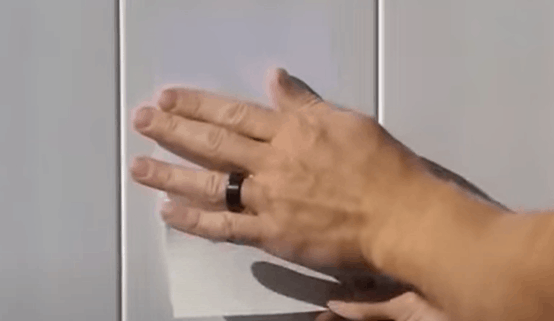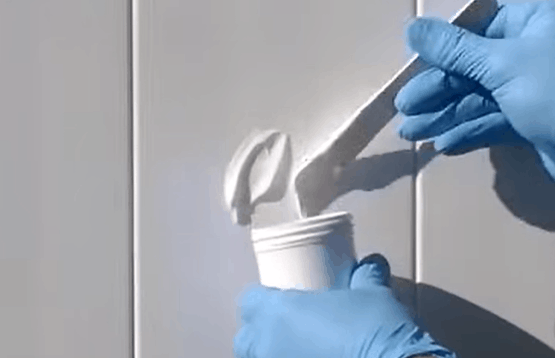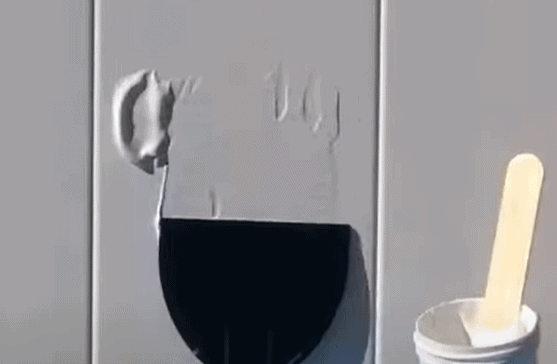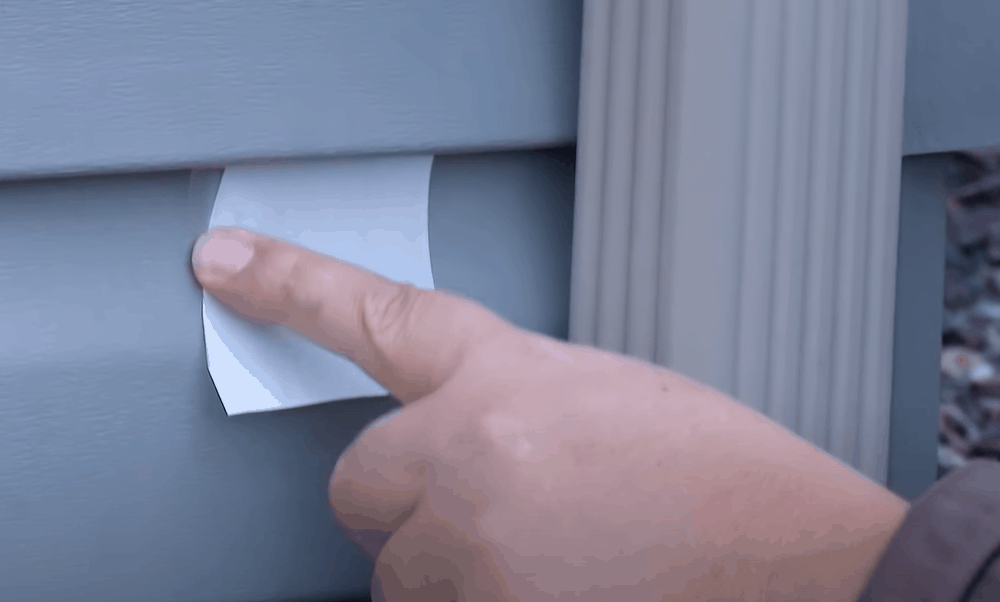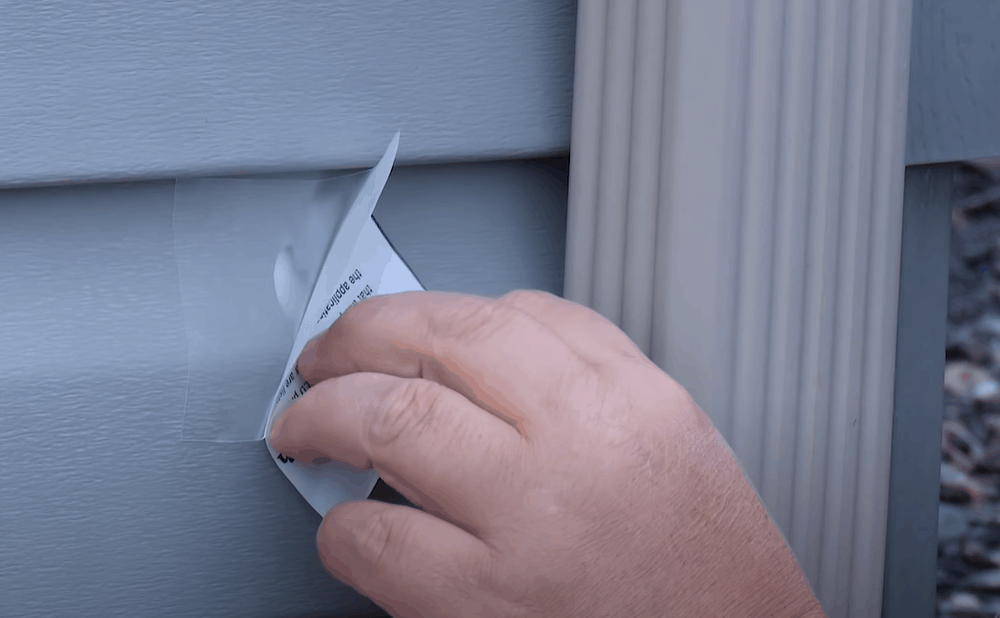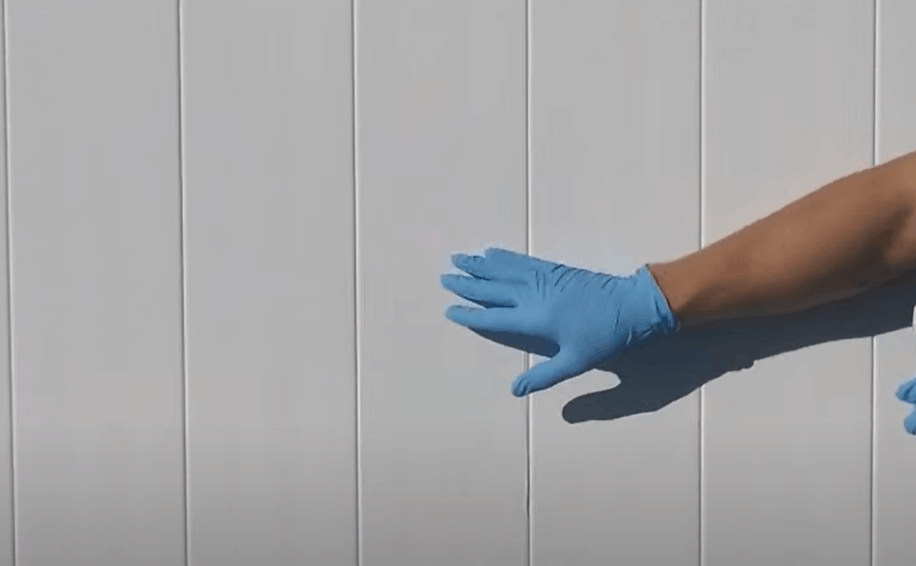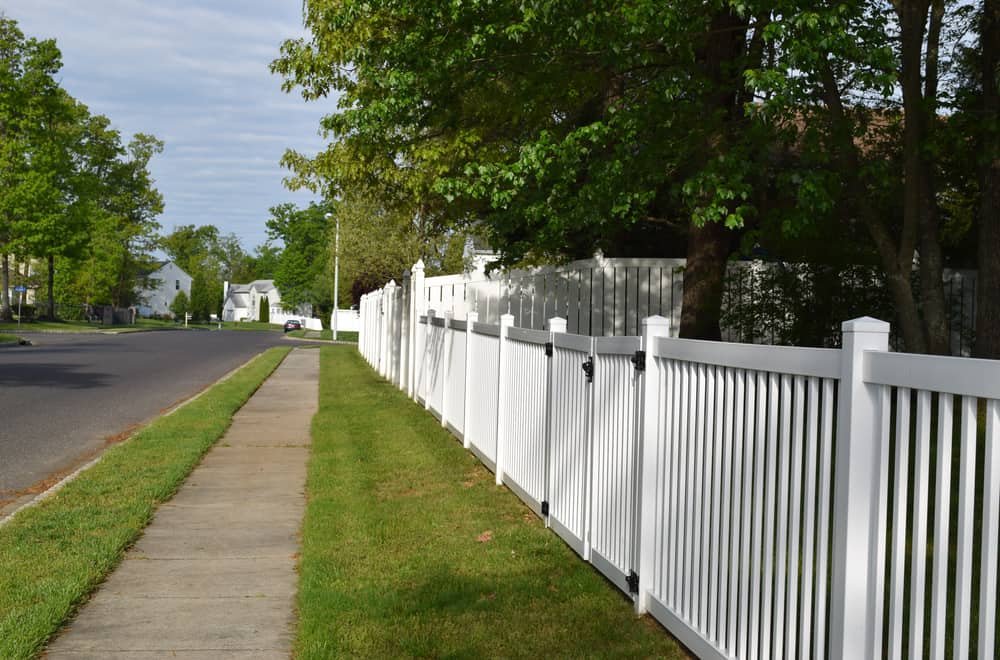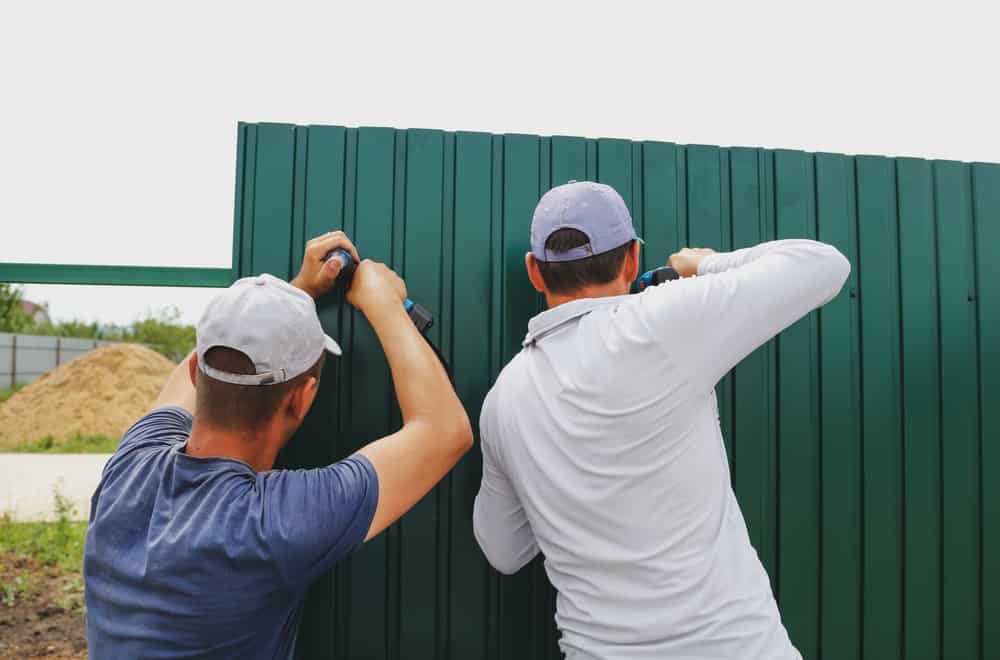Vinyl fences are popular for their durability and low maintenance. Yet, like all other fencing options, they can get damaged over time. This is where you may wonder, can you repair a vinyl fence?
There is good news: you can. Small cracks and holes are easy to repair by yourself with a commercial vinyl repair kit. A broken rail or post may require replacement, and sometimes you may even have to replace an entire fencing panel, but these methods are still cheaper than replacing the entire fence.
With this in mind, let’s see how to deal with the various situations and repair your vinyl fence in no time.
Table of Contents
Patching Cracks and Holes in a Vinyl Fence
Vinyl is one of the most durable fencing materials, but you have to keep in mind that PVC is essentially a type of plastic. Like all plastic materials, constant exposure to elements and sunlight could lead to damage. More often than not, this damage translates into small cracks that could compromise the entire panel if not repaired.
Elements aside, stones flying into the panels while you’re mowing or trimming the grass, as well as objects thrown by kids, could create small holes. Luckily, you can easily repair these damages yourself, following the quick steps below.
Materials
- Expandable foam (in a spray can)
- Plastic filler
- Spray paint in your fence’s color
- Soapy water
- Soft rag
- 80-grit and 180-grit sandpaper
- Fine tooth saw
- Putty knife
1 – Clean the repair area
The first thing to do before repairing a crack or hole in your vinyl fence is to clean the area. Vinyl isn’t hard to clean – all you need is soapy water and a soft sponge or rag. Wash off any dirt and grime, then use a garden hose to rinse the area. Let it dry thoroughly before proceeding.
2 – Sand out the damaged area
Once the area is clean and dry, proceed to smoothing out any edges and sanding the entire area you must repair. Use 80-grit sandpaper and sand the vinyl manually. It is not recommended to use a sander because the tool could only cause more damage. Wipe clean with a damp cloth when you’re done, and let it dry thoroughly before proceeding.
3 – Fill the holes with foam
You can skip this step if you’re repairing fine cracks. However, if the cracks are larger or if you’re repairing holes, use the expandable foam spray to fill all gaps. Push the spray’s nozzle as deep as possible into the hole; in this way, the product will be able to fill all crevices. Go slowly and allow the foam to expand beyond the hole. Let it dry overnight.
4 – Cut the excess foam and level the surface
When the foam is completely dry – after about 8-12 hours – use a fine tooth saw to cut off any excess foam that has expanded beyond the hole. Cut as flush as possible to the vinyl fence, then use medium grit sandpaper (80-grit) to level the surface until the foam filling is slightly concave. Wipe clean with a damp cloth and let dry.
5 – Smooth out the surface with plastic filler
Sealing the foam is important to restore the lost resistance. Simply use a putty knife to apply plastic filler to the area and smooth it out to make it flush with the vinyl fence. Allow the plastic to dry as instructed by the manufacturer. If the cracks were too small to fill with foam, proceed as explained to fill them with plastic filler.
6 – Sand out any filler excess
Using fine-grit sandpaper (180-grit), remove any plastic filler excess. Don’t exaggerate during this step; just sand the area until the surface is perfectly flush. Wipe with a damp cloth and let dry.
7 – Apply a coat of epoxy paint
Once the surface is dry, use appropriate plastic or vinyl paint in a color that matches the rest of your fence. Alternatively, you can apply a thin coat of transparent paint if your fence is white. When you’re happy with the result, let it dry, and your repair is complete.
Vinyl Fence Section Repair
How to Replace Vinyl Fence Panels?
Replacing a vinyl fence panel may be necessary if the holes are too large or the cracks are too many to fill and repair. Here’s how to do it:
- Buy a new panel that matches the rest of your vinyl fence. Some manufacturers sell replacement panels, or you may have to find a compatible model.
- Remove the broken panel. Most vinyl fences use interlocking panels that lock in place without fasteners, while others are fixed in place with screws. If your fence panels are fastened, use an electric screwdriver to remove all screws from the posts and rail and remove the panel.
- Before installing the new panel, it is recommended to check the alignment of the fencing posts. Use a level to check the side of each connecting post from top to bottom and straighten them if necessary.
- Install the new fencing panel by sliding it in place or fastening it with screws, depending on the type of fence you have.
Replacing a Broken Vinyl Fence Post
Broken posts are a bit more complicated to replace compared to a broken panel, mainly because you will have to remove the concrete foundation completely, then fix the new post with fresh concrete. That said, you can still do it yourself.
- Remove the rails and panels fixed to the broken post. Depending on the type of fence you have, the rails and panels may or may not be fastened with screws. If they are, use an electric screwdriver to remove the fasteners.
- Dig out the old post, including any fragments and the old concrete foundation if your posts are held in place with concrete.
- Measure the distance between two existing posts, then determine the exact position where the new post should go. If your fence was installed incorrectly, the new post’s position might not coincide with the position of the old post. If this is the case, cover the old post’s hole and dig a new hole for the new post. The hole should have a diameter of about eight inches and be at least three feet deep.
- Place the new pole in the center of the hole and seal it in place with concrete. You’ll need about 120lbs of premixed concrete for this step. Let the concrete dry overnight.
- Reinstall the fence panels and rails, and your repair is complete.
Installing a New Rail
Vinyl fence rails have an important structural role, holding the slats or pickets in place. Like the poles, damaged rails can’t be repaired, but they are easy to replace.
- If your fence’s rails fasten to the posts and panels, use an electric screwdriver to remove the damaged rail. Otherwise, slide it out of its slot.
- Slide the new rail in place; if you can’t find the appropriate replacement part, you can buy a longer rail and use a circular saw to cut it to dimension.
- Fasten the new rail in place with screws or brackets, depending on the type of fence you have. That’s it.
How Much Does It Cost to Repair a Vinyl Fence?
Repairing a vinyl fence can cost you anywhere from $5 to over $1,000, depending on the damage and whether you can fix the broken part or have to replace it.
Broken slats or pickets, for instance, are inexpensive and easy to replace if needed. A new slat or picket costs around $5, and you won’t incur additional costs if you replace it yourself. Minor cracks and holes are also inexpensive to repair.
Repair kits for small cracks and holes cost about $30-$40, which is far less than replacing the entire damaged panel.
Posts and rails run between $3 and $12. Again, you won’t have to spend anything else on replacing a rail if you do it yourself. In the case of broken posts, you’ll also have to buy premixed concrete, which costs around £13 per 120lbs.
Panels are a bit more expensive, costing about $150 for a simple panel and up to $300 or more for decorative panels. This cost doesn’t include installation, so if you’re not skilled enough to replace the entire panel yourself, you can expect to pay about $42 per hour on average for labor.
Conclusion
Repairing a vinyl fence is possible and far less expensive than replacing the fence completely. Some repairs are easy to do yourself, while others may require professional help. Depending on the damage severity, expect to pay anywhere from a few bucks to several hundred dollars.
What do you think? Is it worth the hassle, or would you rather replace the whole fence? Tell us in a comment below. And before you go, don’t forget to share this article with your friends.
